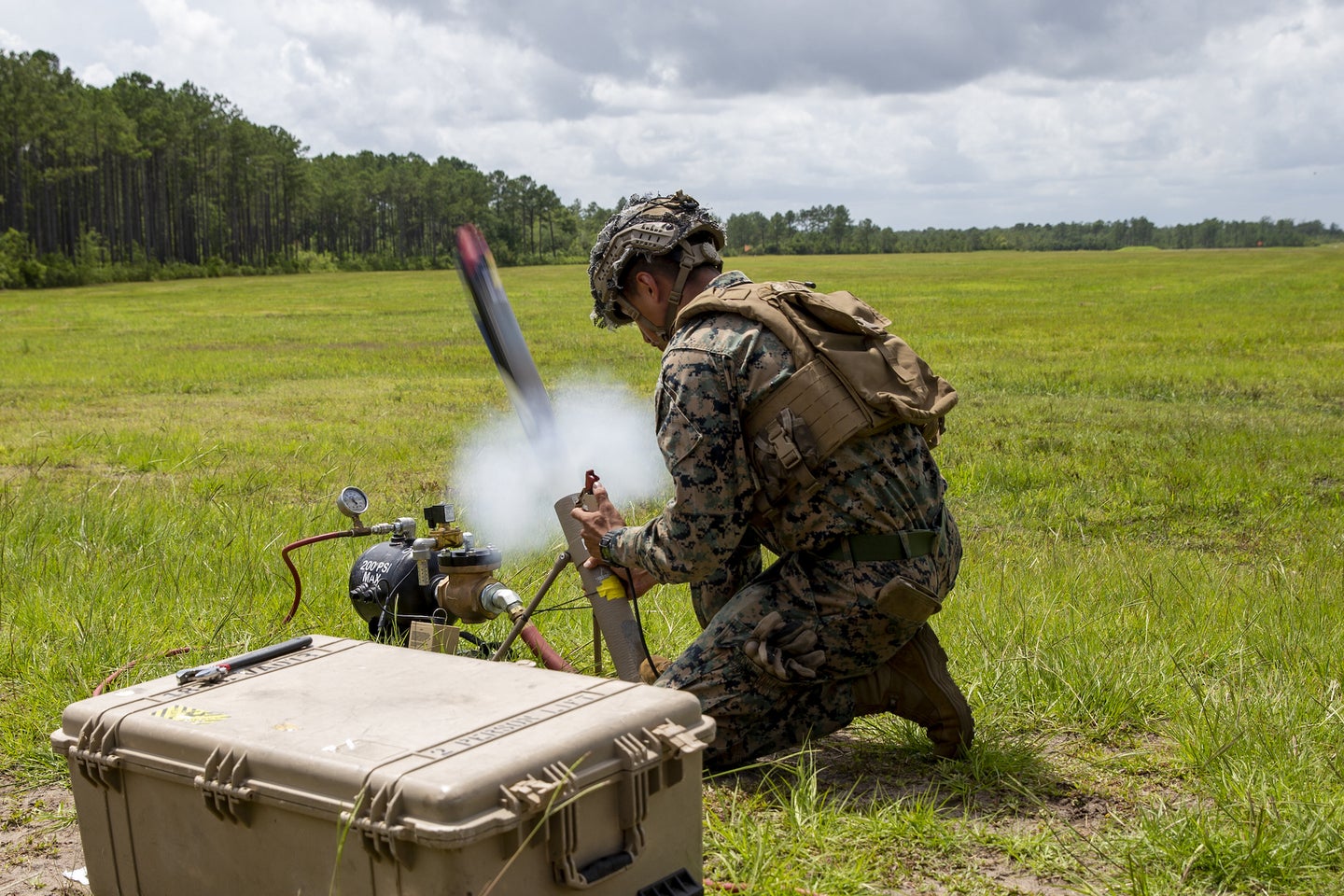What we know about the ‘Phoenix Ghost’ drones going to Ukraine
The new weapon system is said to be like the Switchblade drones. Here's how that kind of military UAV functions.

Last week, the Department of Defense announced that it was sending “121 Phoenix Ghost Tactical Unmanned Aerial Systems” to Ukraine. This release was part of a broader package of arms and aid for the country that has, since February 24, been fighting against invading Russian forces. It also came as a surprise: the Phoenix Ghost drone appeared to be a brand-new weapon system, one so far never reported or revealed to the public.
As reported by Breaking Defense, the Phoenix Ghost is a drone-missile similar to the Switchblade already fielded by Ukraine. The Pentagon initially claimed the Phoenix Ghost was developed for Ukraine after Russia’s February 24 invasion, but Pentagon Press Secretary Jack Kirby clarified the development timeline, saying instead that the Phoenix Ghost was created before the invasion, and was “developed for a set of requirements that very closely match what the Ukrainians need right now in Donbas,” as Breaking Defense reported.
While February 24 marks the start of the current war in Ukraine, Russia and Russian-backed separatists have occupied parts of the Donbas in eastern Ukraine since 2014, and Ukrainian forces had fought that war for eight years. While it is unlikely that a new drone requested by the Air Force was built specifically for the terrain of the Donbas, it is a conflict that military planners have long pointed to to justify new capabilities and weapons.
The public announcement of the drone from the DOD appears to have caught by surprise both the Air Force, which requested the system, and AEVEX Aerospace, the company that makes the Phoenix Ghost. When reached by reporters the day of the announcement, AEVEX had no public statement, and as of April 26, no news announcement about the drone had been posted to the company’s social media profiles or own site.
What is known about the Phoenix Ghost is hauntingly limited. The Pentagon described it as a “one-way” drone that will “deliver a punch,” and said it would be similar to operate for anyone who has already trained on a Switchblade or other drone system.
[Related: Everything to know about Switchblades, the attack drones the US is giving Ukraine]
As The War Zone reports, Kirby told the press that Phoenix Ghost differs in scope of capability from the Switchblade, though it’s similar in scope.
“I’m gonna be loath to get into much more detail about the system at this point for classification purposes, but you can safely assume that, in general, it works,” Kirby told reporters. “It provides the same sort of tactical capability that a Switchblade does. Switchblade is a one-way drone if you will, and it clearly is designed to deliver a punch. It’s a tactical UAS, and Phoenix ghost is of that same category.”
If the Phoenix Ghost retains the tube-launched form of a Switchblade, it will likely offer the same kind of flexibility as a weapon that can be mounted on vehicles or carried by soldiers into combat. (Switchblades are fired from tubes and then can be guided or assigned to hit a target from a remote control station, letting the weapon fly and explode like a missile that can make sharp turns.) Areas to improve on Switchblade capabilities would likely be in the form of greater range, explosive payload, or flight time, any of which could enhance the ability of the drone to find and crash into enemy soldiers or vehicles.
[Related: The US is looking for a new anti-air missile]
While AEVEX’s website is silent on the Phoenix Ghost, instead it shows off other services and components for sale like sensors and image processing. This includes tools that use drone cameras to map the surrounding terrain and navigational sensors. It’s the latter that might make an appearance in the Phoenix Ghost, as better navigation could lead to more accurate attacks, especially when the weapon is small enough that exact placement on the top armor of a vehicle matters. That, plus the ability to fly longer than existing Switchblades, could make the Phoenix Ghost useful in the kind of counter-offensive pushes currently undertaken by the Ukrainian military.
Fighting against Russian tanks and artillery in entrenched positions, ones dug in Ukrainian territory, will require Ukraine’s military to give up the advantages that defined its early war effort, like maneuvering out of the way of incoming tank columns before ambushing those same columns at night.
While the Phoenix Ghost’s design reportedly predates the start of the invasion, and just happens to have coincidentally matched the conditions of the war, the Pentagon is asking companies that make weapons if they have anything else that might be useful to deliver to the fight.
In a notice posted April 22, the Defense Logistics Agency announced it is seeking information “from across industry on weapons systems or other commercial capabilities related to air defense, anti-armor, anti-personnel, coastal defense, counter battery, unmanned aerial systems, and communications (e.g., secure radios, satellite internet).” The Switchblade, and likely the Phoenix Ghost, can be reasonably described as anti-personnel unmanned aerial systems, with the potential for models with larger explosive payloads to be anti-armor as well. Companies making or considering making other such weapons, to defeat everything from ships to artillery, have been invited by the Pentagon to see if their new weapon can prove useful in the hands of Ukraine’s military.
